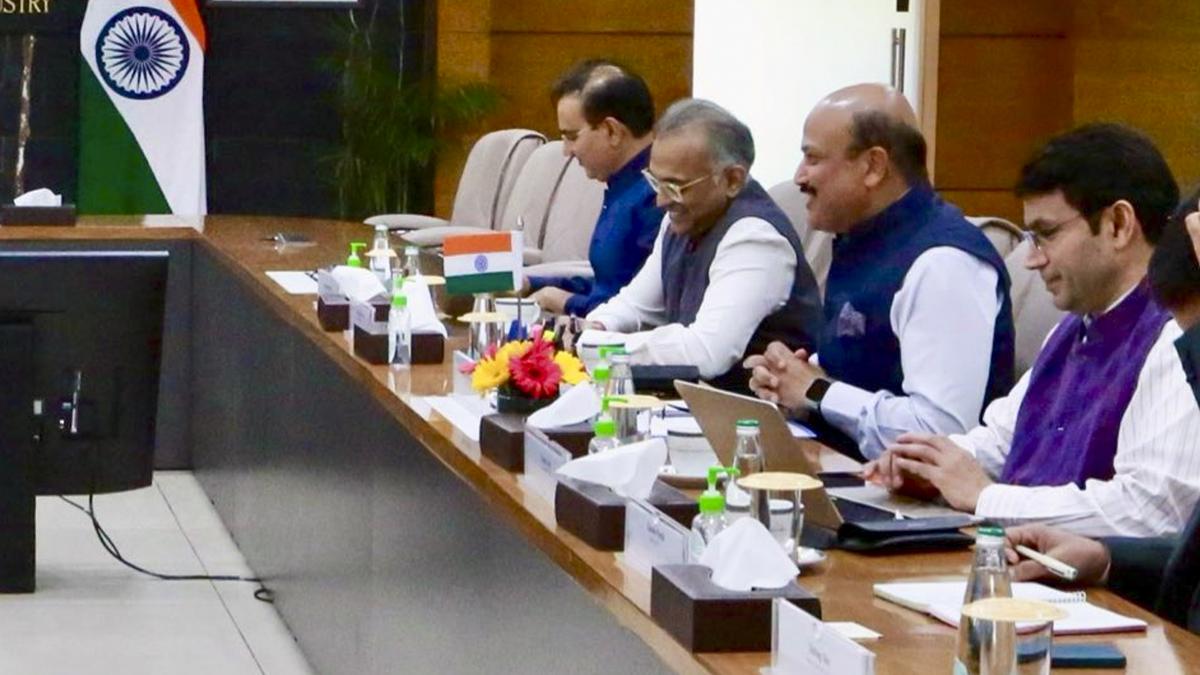The flying crew shortage is already taking its toll with pilots complaining of rising levels of fatigue, a less-than-reassuring trend in an industry where the margins for safety are negligible. File
| Photo Credit: Reuters
Air India group’s jumbo order of 470 aircraft has turned the spotlight on an equally big problem plaguing India’s roller-coaster aviation industry — an existing shortage of pilots that is set to drastically widen.
Amid all the jubilation over the erstwhile flag carrier’s historic order, the big question on everyone’s mind within the airline and the larger industry is, “Where will the 7,000-8,000 pilots needed to fly these aircraft come from?”, especially at a time when India’s airlines have been dogged by delays and cancellations and even forced to look for parking space for their planes due to a paucity of cockpit crew to fly them. And the flying crew shortage is already taking its toll with pilots complaining of rising levels of fatigue, a less-than-reassuring trend in an industry where the margins for safety are negligible.
Also read | Air India’s 840-aircraft order includes option to buy 370 planes: Official
For the 470 aircraft alone, Air India and its sister airlines will require “7,000 to 8,000 pilots over the next decade, or nearly 700-800 pilots in a year,” says an industry official closely involved with the process. “This is a massive challenge. When we don’t have enough pilots to manage the present scale of operations, where will new pilots come from,” asked the official, who spoke on the condition of anonymity.
The order includes 70 wide-bodied or twin-aisle jets: 40 Airbus 350s, 20 Boeing 787s and 10 Boeing 777-9s, and 400 narrow-bodied aircraft: 210 Airbus 320/ 321Neos and 190 Boeing 737 Maxs, with the planes set to arrive “over the next decade”, according to a social media post by Air India’s Chief Commercial and Transformation Officer Nipun Aggarwal.
As many as 31 aircraft are set to arrive in the second half of 2023, with a large chunk of the remainder due to come from 2025.
Air India recently faced cancellations and delays of its highly remunerative flights to the U.S. and Canada due to paucity of crew.
“When an airline is forced to cancel 30 flights per day due to pilot shortage, it can incur a loss of ₹3 crore per day, or approximately ₹1,000 crore a year,” says Hemanth D.P., CEO, Asia Pacific Flight Training Academy and ex chief commercial officer and chief operations officer, GMR Airports. “For an airline that operates 1,500 flights every day, 30 flights is equivalent to 2% of its total flights and a similar percentage in loss in revenue from operations. But at the same time you are paying support crew to stay home or in a hotel, paying engineering staff and your planes are grounded. Lack of pilots, pushes operational costs up, resulting in airfares rising and harming the airline and end users,” he added. In February 2019, IndiGo was forced to cancel a large number of flights due to pilot shortage.
Though the new planes are expected to replace the airline group’s present fleet strength of almost 200 planes, the industry official said that the substitution would happen over a period of time. “Current fleet is going to run simultaneously for a period of time, and is also being refurbished,” he noted. At the same time, there would be many pilots who would be retiring, he observed, describing the situation as “a nightmare”.a
Since the order is staggered over a 10-year period, the delivery of 470 aircraft over this period will mean nearly “3-4 aircraft per month”. An average of 12 sets of pilots (12 co-pilots and 12 pilots per aircraft) for ultra long haul flights such as to the U.S., and 8.5 sets of pilots for long haul flights such as to Europe, alongside an average of 7 sets of cockpit crew for every narrow body, gives a total of nearly 7,000 pilots and co-pilots, according to a back of the envelope calculation.
To add to the challenge is the fact that Air India has placed an order for A350s, which is a new type of aircraft in its fleet, and will require a fresh batch of crew as pilot training is specific to each type of aircraft. Many closely involved with flight operations at some of the leading airlines in the country say this will prove to be an operational challenge as crew cannot be shuffled around from Boeing 777 or 787-9 fleet, say if there are delays due to inclement weather.
According to the DGCA data for 2021-2022, there are a total 8,573 pilots in the country for nearly 700 aircraft. Apart from Air India, IndiGo will receive nearly 500 aircraft ordered with Airbus, and the 17-plane strong recent entrant Air Akasa plans to reach the target of 72 by March 2027, as well as order more planes.
A shortage of pilots also has implications for pilot fatigue, an issue often brought up by them, as well as passenger safety.
There is also a massive infrastructure required for training such as simulators, trainers, among others. Air India has five simulators — 3 for wide-bodied jets in Mumbai and 2 for the A320 in Hyderabad.
The pilot shortage poses a challenge to the airline industry that needs urgent solutions with policy support from government, adds the official.





